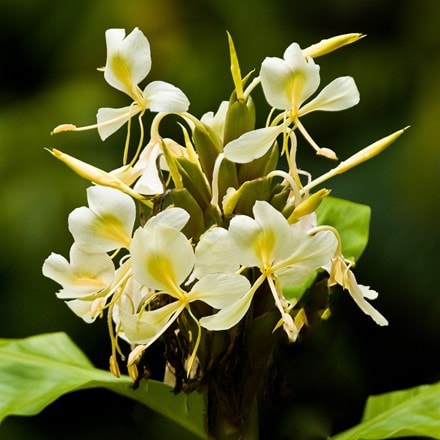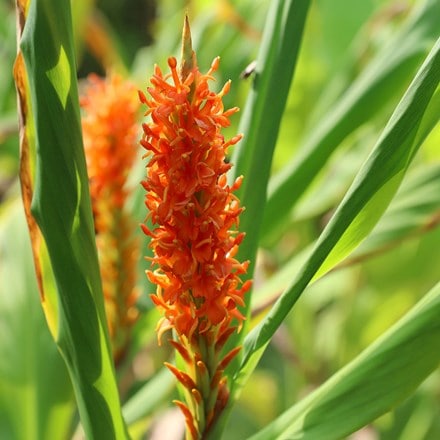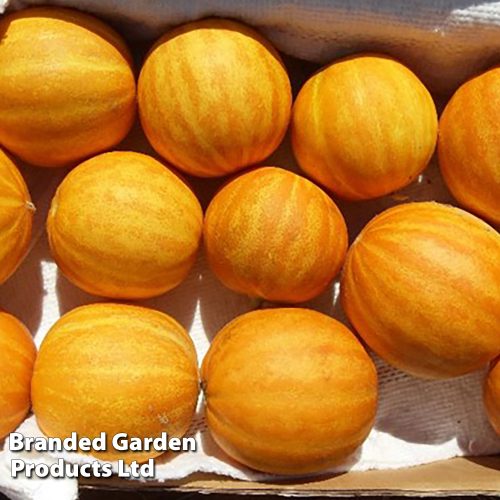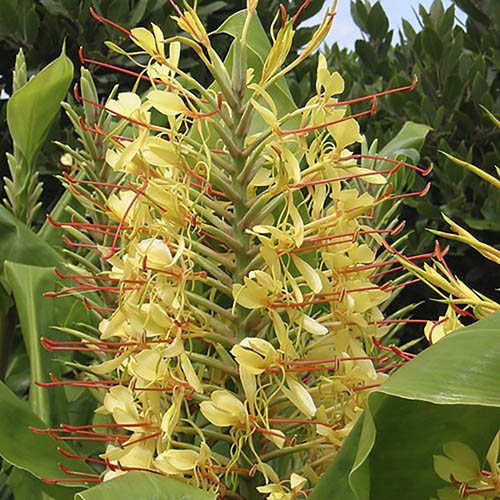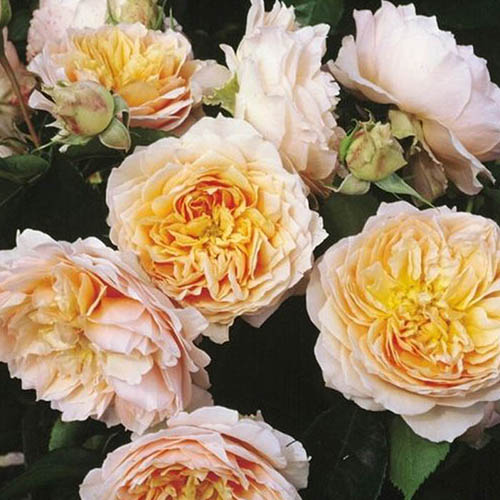Ginger Hedychium. Learn, buy & grow ginger plants in the UK
How to grow and care for ginger plants
What are ginger plants
Which ginger plants are hardy and can be grown in the UK?
Can you grow ginger plants in pots?
Where in the garden should I plant my ginger plants?
Do ginger plants require my food and water
How should I over winer my ginger plants
When should I plant ginger plants outside?
Types of Hedychium
Where can you buy ginger plants in the UK?
Hardy Ginger Lily – Hedychium. Ginger is a scented, herbaceous perennial plant popularly grown as a spice and for medicinal purposes in the tropics, but grown for show in tropical gardens here in the UK. Also called Zingiber officinale, it consists of the rhizome, that is the ginger roots that is prepared as a spice, and a pseudostem that holds its leaves. It blooms flowers on inflorescences that arise directly from the base of the plant.
Skip Link: Just show me where I can buy ginger plants in the UK
Hedychium densiflorum
The flowers are sometimes yellow with purple edges or may occur in other colours such as purple, red, or brown depending on the species of the ginger plant. The plant grows up 60cm to 120cm with green leaves that are 7cm in length and 1.9cm wide. It is native to southeast Asia but has been grown in other regions for hundreds of years.
How To Grow And Care For Ginger Plants
Ginger plants are not considered difficult plants and they are relatively easy to grow. Although you may require some extra care when growing it in colder regions like the UK rather than its native tropical and temperate region.
What are ginger plants?
The name ginger plants is a common catch all name for a number of different plants such as Zingibers, Roscoea, Cautleya and of course the more common Hedychiums. Fundamentally they form an underground rhizome, as well as evergreen or deciduous perennial.
Which ginger plants are hardy and can be grown in the UK?
Our firm favourite for UK gardens is the Hedychium greenii, which with a thick mulch in a sheltered area will do just fine. If you have a more tender ginger, treat like cannas and dig and store over winter.
Can you grow ginger plants in pots?
Sure thing, but remember like growing anything else in a pot to be more aware of it drying out, or baking in the sun. Also, it’ll suffer damage from the cold much faster in a pot than in the ground.
Where in the garden should I plant my ginger plants?
They are pretty tolerant of most sites, but full sun to partial shade is fine. What they do love though is a lot of nutrient rich deep soil. Keep them well fed!
Do ginger plants require much food and water?
They certainly do, ideally daily watering through the summer months and a nice feed every couple of weeks.
How should I over winter my ginger plants?
I just mulch over all the more hardy types of ginger plants I have in the garden, usually add some straw which is floating around after I have wrapped the Musa Basjoo bananas! They like to be on the dry side through the winter if you are lifting them, and only keep barely moist.
When should I plant ginger plants outside?
Like the rest of the tender plants, I wait until at least the 3rd week in May before anything goes in the ground. There is no point starting earlier, you’ll just get knocked back if there is a sneaky frost. Just have some patience.
How to check your ginger plants for winter damage with Will Giles
Taking a look at Will’s ginger plants to see if the winter has affected any growth. Will has been growing gingers for many years, so this short video is well worth a view if you are thinking of growing gingers yourself, or have some already. Winter has taken it’ s toll on a number of exotic gardens this year, growing exotic and tropical plants in the UK can often be a challenge, but Will has been growing exotics in England for over 25 years.
If you are interested in buying ginger plants, have a look at some of the plants available to buy at the moment, they are beautiful plants and produce the most wonderful flowers.
How to check your ginger plants for winter damage with Will Giles.
Taking a look at Will’s ginger plants to see if the winter has affected any growth. Will has been growing gingers for many years, so this short video is well worth a view if you are thinking of growing gingers yourself, or have some already. Winter has taken it’ s toll on a number of exotic gardens this year, growing exotic and tropical plants in the UK can often be a challenge, but Will has been growing exotics in England for over 25 years.
Types of Hedychium
Hedychium Gardnerianum ‘Kahili Ginger’: It is a species of ginger lily with bright yellow flowers and visible stamens that emerges from each yellow flower. A hardy perennial that can stand temperatures as ow as 16 degrees celsius. It grows to reach a height of 150cm-180cm. Lastly, it is one of the few species of hedychium that grows from seed.
Hedychium Densiflorum ‘Dense Ginger Lily’: It is a clump-forming species of ginger lily blooming bright orange or yellow flowers on dense, cylindrical spikes that shoot up as high as 8 inches. It grows quickly and can reach heights between 120 and 270 cm. It is a popular choice because of its scented and delicate flowers.
Other species include: Hedychium Aurantiacum, Hedychium Tara, Hedychium Coronarium, Hedychium Coccineum.
Where can you buy ginger plants or find Hedychium for sale in the UK?
Ginger lily plants for sale are often quite hard to find and you need to find specialists. We have a couple of suggestions below for UK based suppliers of ginger lily plants, so I suggest that you start there. Personally I have had good results buying ginger lily seeds and germinating them in my propagator – certainly a cheap way to get some of the more rare gingers into your garden for not a lot of cash. However, buying a large healthy rhizome is always good for instant bulk!
FAQ
How fast do ginger plants grow in the UK?
Most are around 1.2 – 1.5m, but get there pretty quickly. Expect a small 2L pot to get to a good size in one year. Give them a warm start, food and water through the season and you’ll get good results.
Is it different to the ginger from the supermarket?
The ginger from the supermarket is commonly Hedychium officionalis. Supermarket ginger plants are not really worth growing as an ornamental as they are just not very attractive at all! Unless you just want to eat It, don’t bother, and even then it requires quite a bit of heat and light to get moving. Be aware that it has been know that shop bought ginger may have growth suppressant on it.
How do you plant ginger?
Dig into loose soil at least 5-10 centimetres deep. Place the ginger in the soil pointing upwards and cover up with soil to make ridges 15-20 centimetres high. Lightly water the soil shortly after planting and cover it with a layer of mulch. Water regularly throughout the active growing season to ensure the soil is always moist.
What does a ginger plant look like?
With a height of 2-3 feet, ginger plants have a distinct look with long green foliage that shoot up from the base of the plant. The rhizomes stems have hairy whiskers at their base. Lastly, ginger plants bloom brown or purple flowers that shoot up from the base of the plant throughout spring. Sometimes the flower colours are red or yellow depending on the species.
How do you plant ginger root?
When planting ginger roots make sure if there are any exposed surfaces due to cutting or snapping, you must let the cut surfaces to heal. Leave it for a couple of days until each piece forms a callus and becomes plump with growth buds. Plant in the growth buds in early spring maintaining distance and following irrigation procedures for a ginger plant.
How do grow ginger plants in the UK?
Ginger is relatively easy to grow in the right conditions. Ginger is a tropical plant, so it loves humidity and thrives in partial shade when planted in loose soil. Providing your ginger plant with enough warmth and much-needed sunlight will greatly ease the growing process.
Do ginger plants like the full sun?
The short answer is yes, when in the UK they can have as much as possible! In the tropics however, Ginger plants thrive better in partial shade to full shade rather than full sun exposure.
How do you look after ginger plants?
Caring for a ginger plant is relatively easy in the right conditions. Plant your ginger in organically rich, moist and loose soil that drains easily. Water regularly to keep the soil moist but don’t overwater as the draining water will drain the nutrients too. Plant ginger in partial to full shade and protect it from direct sunlight exposure. Finally, provide your ginger plant with enough warmth and humidity.
How do you plant ginger in the UK?
Wait until after the frosts have gone late spring into loose soil, rich in nutrients, moist and well-draining in partial to full shade. Alternatively, you can plant it in a poly-tunnel to ensure that your ginger plant gets enough warmth.
How and when should you plant ginger?
In tropical regions, ginger should be planted late in the dry season or early in the wet season. In colder climates like the UK, ginger should be planted after the frosts.
How do you propagate the ginger plant?
The most common way to propagate ginger is by rootstalk cuttings.
Is ginger a flowering plant?
Yes, ginger is a flowering plant. It blooms in spring with purple, brown, red, or yellow flowers depending on the species you’re growing.
How do you grow a ginger plant in a pot?
Use a large pot with a draining hole to grow ginger. Maintain the soil quality that is needed for ginger plants outdoors and take note of the location you place the pot. Place the pot in a warm room where it can get indirect sunlight and water regularly to keep the soil moist.
How do you plant ginger lily?
Ginger lily should be planted with the same procedures as regular ginger plants. Maintain the soil, water, and light requirements and your plant will grow successfully.
Soil: The ideal soil type for a ginger plant is organically rich, moist, well-draining, and slightly acidic with a pH of 6.0 – 6.5.
Water: Ginger requires a lot of water especially immediately after planting but be careful not to overwater the plant.
Light: They should be provided with enough sunlight in partial to full shade. Morning sunlight is great for ginger plants, but they should be protected from the harsh afternoon sun.
Temperature and Humidity: Ideally ginger plants require a minimum temperature of about 15 – 16 degrees Celsius and like warm places with high humidity of 40%-50%. However plenty will grow in the UK with a mulch over them to see them through the winter and freezing weather.







